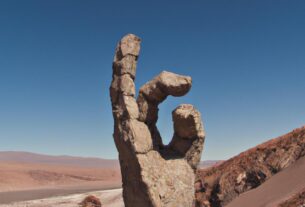Are you curious about the tallest statue in the world? If so, let me introduce you to a statue that stands not only as a remarkable feat of engineering but also as a symbol of unity. Yes, you guessed it right – the Statue of Unity. Since its inauguration in 2018, this statue has been making headlines, and for all the right reasons. Let’s embark on a fascinating journey to explore the height of the Statue of Unity and understand why it holds such significance.
Overview of the Statue of Unity
Brief history and significance
Back in 2010, the idea of erecting a statue in honor of Sardar Vallabhbhai Patel was proposed by Narendra Modi, the then Chief Minister of Gujarat. The Sardar Vallabhbhai Patel Rashtriya Ekta Trust (SVPRET) was formed to oversee the project’s construction. The statue, designed by Indian sculptor Ram Sutar, pays homage to Sardar Patel’s contributions to the Indian freedom struggle and his role in unifying the country.
Key features and design
Situated on a river island called Sadhu Bet, near the Sardar Sarovar Dam in Gujarat, India, the Statue of Unity is not only tall but also an engineering marvel. Made of bronze cladding on an iron frame, its exterior is coated with a layer of bronze patina, lending it a captivating gold-like appearance.
The statue’s design reflects Sardar Patel’s vision of a unified India, with his outstretched hands symbolizing his inclusive personality and welcoming nature. The statue’s base houses a museum that showcases Sardar Patel’s contributions, while the observation deck, located at a height of 153 meters, offers a breathtaking view of the surrounding Narmada River and nearby mountain ranges.
The Height of the Statue of Unity
Exact Height Measurement
So, how tall is the Statue of Unity? Standing at an impressive 182 meters (597 feet) from its base to the tip, the statue’s base is situated approximately 3.5 kilometers from the Sardar Sarovar Dam on the Narmada River. The statue itself stands at 128 meters, with its base measuring 58 meters in height.
Comparison to Other Famous Statues
When comparing the height of the Statue of Unity to other famous statues around the world, its stature becomes even more evident. The previous record holder, the Spring Temple Buddha in China, stood at 128 meters (420 feet) – a full 54 meters shorter than the Statue of Unity. Even the renowned Statue of Liberty in New York, measuring 93 meters (305 feet) in height, falls short of halfway compared to the Statue of Unity.
Why Was This Height Chosen?
Choosing the height of the Statue of Unity was a deliberate and meaningful decision. The towering height represents Sardar Vallabhbhai Patel’s commanding presence and his invaluable contributions to India’s freedom struggle. Furthermore, the statue symbolizes national unity and serves as a gentle reminder of the importance of national integration.
Additionally, the height of the statue was chosen to draw tourists from around the globe, putting India on the world map. As a result, the Statue of Unity has become a major tourist attraction, attracting millions of visitors each year and significantly boosting the local economy.
Construction of the Statue of Unity
Constructing the Statue of Unity was an immense undertaking that required meticulous planning, execution, and coordination. Let’s delve into the challenges encountered during its construction, the techniques employed to ensure stability, and the role of technology in bringing this masterpiece to life.
Challenges Faced During Construction
Building a statue of such magnitude presented numerous challenges. First and foremost, a suitable location had to be selected—one that could withstand the statue’s weight and remain easily accessible to visitors. Additionally, the statue’s design had to strike a balance between structural stability, aesthetics, and cultural significance.
Procuring the necessary materials for construction was another hurdle. With the statue made of bronze cladding on an iron frame, sourcing the approximately 1,850 tonnes of bronze from different parts of the country proved to be a daunting task.
The construction process itself encountered obstacles due to the statue’s location on an island in the Narmada River. Transportation of materials and workers was a logistical nightmare, exacerbated by the site’s susceptibility to flooding during the monsoon season.
Techniques Used to Ensure Stability
To ensure the statue’s stability, several techniques were employed during its construction. The foundations of the statue were deeply rooted into the ground, and the concrete used for its base boasted exceptional quality and strength. The statue’s iron framework was designed to withstand high winds and seismic activity, with flexibility incorporated to allow for swaying during earthquakes.
The bronze cladding of the statue was also meticulously designed for resilience and durability. Thick sheets of bronze were welded together, varying in thickness depending on the curvature of the statue. Thicker sheets were used in areas subject to more stress.
Role of Technology in its Construction
Technology played a pivotal role in the construction of the Statue of Unity. 3D modeling software was instrumental in refining the statue’s shape and structure. Advanced surveying techniques, such as laser scanning and drone imaging, ensured accuracy and precision throughout the construction process.
Innovative technologies, including precast concrete blocks and modular construction techniques, were employed to expedite construction, reduce costs, and maintain quality control.
The Symbolism Behind the Statue of Unity’s Height
The towering height of the Statue of Unity holds not only physical significance but also serves as a powerful symbol of India’s culture and heritage. Let’s uncover the meaning behind the statue’s height and explore its impact on tourism and the local economy.
What does the height represent?
The lofty height of the statue embodies Sardar Patel’s towering personality and immense contributions to India’s freedom struggle. It symbolizes the strength and unity of the country and its people and stands as a testament to India’s engineering prowess and its capacity to undertake monumental infrastructure projects.
How does it reflect India’s culture and heritage?
The construction of the Statue of Unity has showcased India’s rich cultural heritage. Inspired by Sardar Patel’s traditional attire and the tribal art of the region, its design pays homage to the nation’s cultural roots. The statue’s base, serving as a museum, offers visitors a glimpse into the cultural and historical significance of the area, attracting tourists from around the world.
Impact on tourism and local economy
Since its inauguration, the Statue of Unity has emerged as a prominent tourist attraction, significantly contributing to the local economy. It has generated employment opportunities for the local population and helped boost revenue within the tourism industry. Moreover, the statue has placed the region on the global map, fostering tourism and cultural exchange.
In conclusion, the height of the Statue of Unity is not simply a physical attribute but a symbol of strength, unity, and cultural heritage. It stands as a source of pride for India, a representation of the sacrifices made by freedom fighters and leaders, and a testament to the country’s growth and development.
At TooLacks, we take immense pride in bringing you the latest news and information on nature, gardening, and animals, including captivating stories such as the Statue of Unity. We hope this article has provided you with both informative and engaging insights into the height and significance of the Statue of Unity.
Thank you for joining us on this journey, and stay tuned for more exciting articles from TooLacks!

